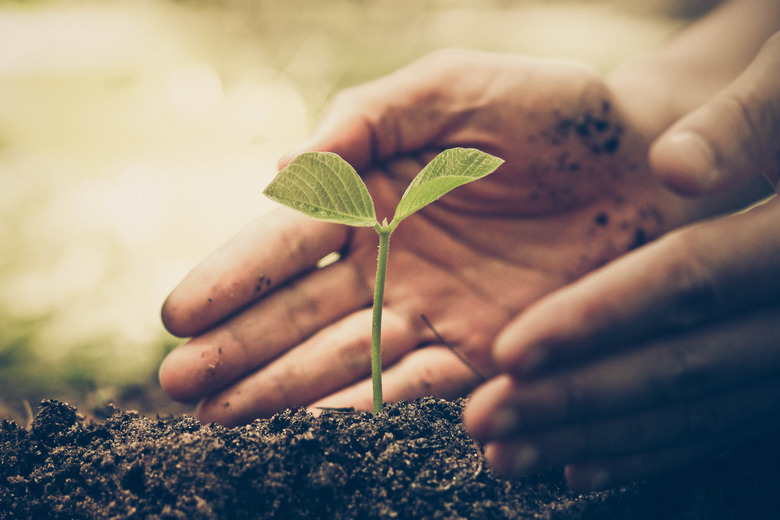What Are The Functions Of Starch In Plant Cells?
When a plant takes in carbon dioxide from the atmosphere and receives adequate sunlight and water, chloroplasts in the plant's cells convert the reactants, water and carbon dioxide, into oxygen and glucose. Glucose is stored in the tissue of the plant for food and energy. In essence, this is the process of photosynthesis. Glucose is often stored in plants in the form of starch, which is composed of glucose molecules linked in long chains.
TL;DR (Too Long; Didn't Read)
Plants convert sources of energy from their environment in to a long lasting fuel: starch.
Significance
Significance
Beer and whiskey producers use their knowledge of starch degradation and fermentation in cereal grains to make their products.
Plants have to produce starch to store energy for cell metabolism. Human bodies, on the other hand, do not synthesize starch. When a human eats starchy plant material, some of the starch breaks down into glucose for energy: any unused remnant of this ingested energy is stored as fat deposits.
Function
Function
When the plant cell requires energy for a cell process, it releases enzymes to degrade part of the starch chain. As starch in plant cells degrades, carbon is released to be utilized in producing sucrose. At the same time, the carbon produced allows cells to continue to grow and maintain themselves.
Storage
Storage
In some plants, starch is stored in cell organelles called amyloplasts. Some plant roots and embryos, in the form of seeds and fruit, also serve as storage units for starch. Cells in plant leaves produce starch in the presence of sunlight.
Identification
Identification
To test for presence of starch, apply tincture of iodine to a cut surface of a fruit or vegetable. To test solid parts of plants like leaves and stems, pulverize them with a mortar and pestle. Then, use drops of a tincture of iodine added to a test tube containing the crushed plant parts and sap. If starch is present in the plant's juices, the iodine will change color from dark brown to dark bluish-purple or black.
Potential
Potential
After harvest, the glucose in the kernels of an ear of corn convert into starch over time, making the corn lose its flavor. Each year, new hybrids of sweet corn are produced that allow the kernels in an ear of corn to retain their sweetness for a longer period post-picking.
Genetic researchers are studying ways to increase the quality and quantity of starch in plant cells. The food processing industry continues to see great demand for plant starch used in things like high fructose corn syrup and other foods.
Scientists are studying the way plant cell walls are built. They hope to genetically alter plants so that cellulose from formerly unusable plant parts like corn husks and stems can be fermented for ethanol production. This will reduce the need to use plant starch in ethanol and may reduce its cost.
References
Cite This Article
MLA
Petersen, Sandra. "What Are The Functions Of Starch In Plant Cells?" sciencing.com, https://www.sciencing.com/functions-starch-plant-cells-5089163/. 25 April 2018.
APA
Petersen, Sandra. (2018, April 25). What Are The Functions Of Starch In Plant Cells?. sciencing.com. Retrieved from https://www.sciencing.com/functions-starch-plant-cells-5089163/
Chicago
Petersen, Sandra. What Are The Functions Of Starch In Plant Cells? last modified March 24, 2022. https://www.sciencing.com/functions-starch-plant-cells-5089163/
